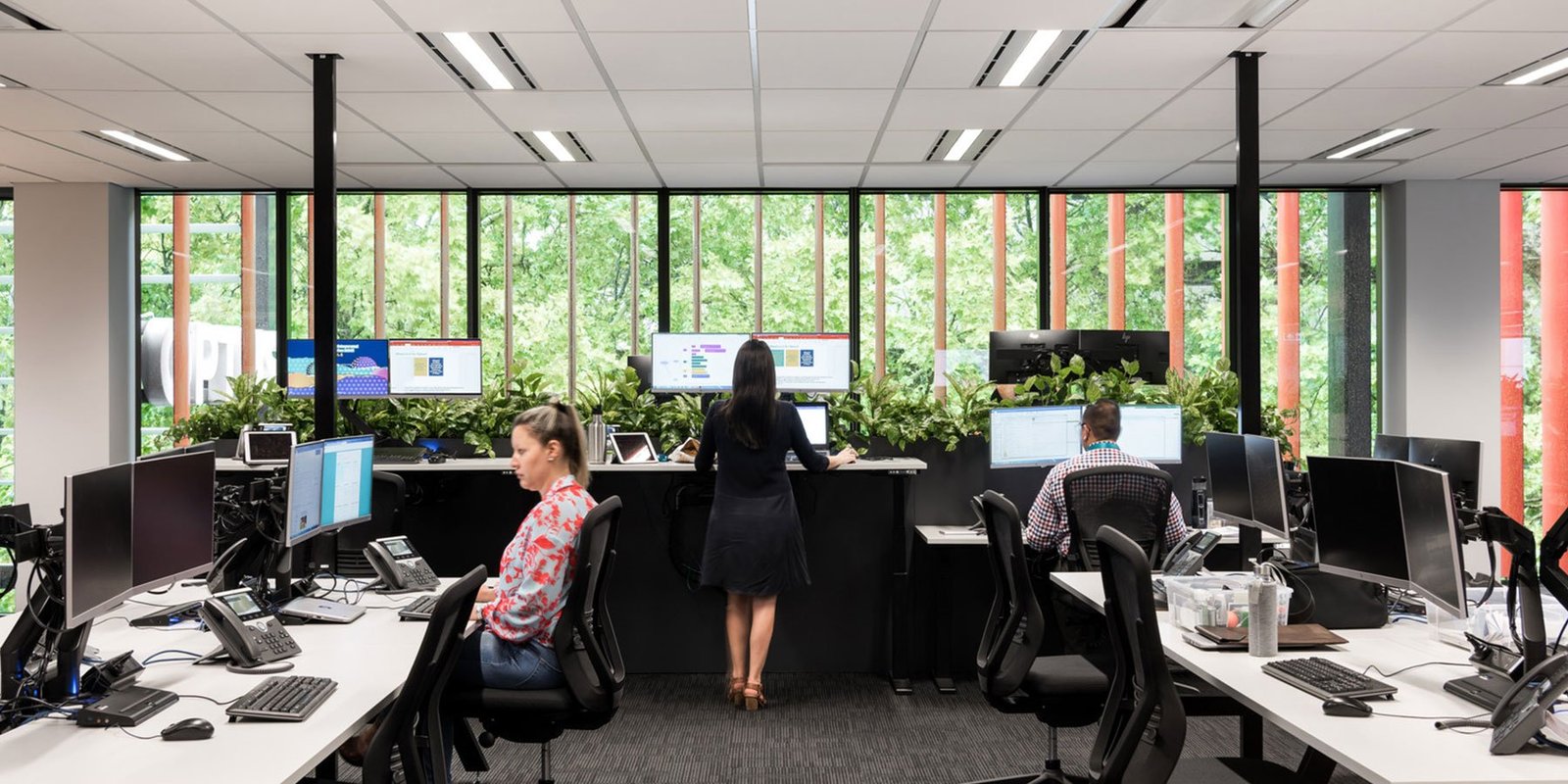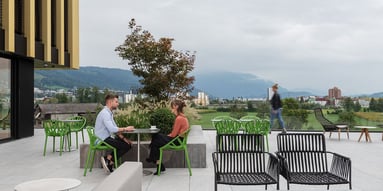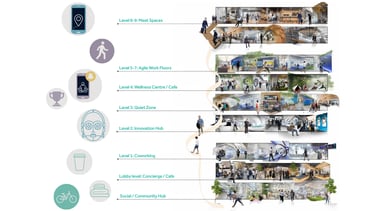How to design a healthier workplace

In this three-part mini-series, we’ll be providing tips and advice on improving wellness in the workplace. This includes mental health, environmental responsibility and physical wellbeing.
People do their best work when they’re feeling their best – which means greater productivity. So, how do you design your offices for physical health and wellbeing?
There are two key benefits of enhancing physical health in your workplace. First, it’s better for business if your people are as fit and well as they can be – in the battle for competitive advantage, an extra 0.5% in productivity could make all the difference. Second, a company which promotes and supports health at work is more likely to appeal as a destination employer.
“As workplace wellbeing gathers momentum, it is essential that employers embrace the concept of providing leadership and support.”– Biddy O’Neill, Healthy Ireland[i]
Discourage ‘desk potatoes’
People who sit for prolonged periods are more than twice as likely to develop heart disease and strokes, even if they’re regularly physically active. When Allergan Pharmaceuticals prioritised heart health at work, they beat off almost 100 other companies to win two Irish Heart Foundation awards for leading the way[ii].
Consider introducing sit-stand desks (but make sure people understand how to use them effectively); mobile phones which liberate people to move around instead of being tied to a handset; encouraging the use of stairs; placing appealing amenities on the periphery so that the walk there is more than a few steps; and banning eating at desks.
Creativity is needed
Workplace wellbeing is becoming an ‘arms race’. Benefits like in-house gyms or subsidised gym memberships are now almost de rigueur. Some companies go further, with in-house clinics, health assessments and screening programmes. Some offer health and wellbeing apps/websites to provide advice and track healthy habits like exercise, rest, and even managing alcohol and nicotine consumption. Others even offer 24/7 access to virtual GPs.
So, what’s next? Coming up with the next new benefit means employers need to think creatively while at the same time listening closely to what matters most for employees (and their families) in that particular location and context.
“87% of workers would like their current employer to offer healthier workspace benefits, with options ranging from wellness rooms, company fitness benefits, sit-stands, healthy lunch options and ergonomic seating.” – Forbes.com[iii]
But beware of the fad
Initiatives must be meaningful and carefully thought through. For example, there’s a lot of talk of sleep pods in workplaces, which can be ideal for retreating into mindfulness or a power nap – but they need handling with care. They shouldn’t be used to replace a healthy sleep pattern. If your people are working too many hours in the office or at home, or showing signs of presenteeism, or even sleeping at work (coders crawling into sleeping bags under desks; executives with sleeping spaces off their offices), it’s indicative of deeper concerns.
“Sleep loss can seriously damage your health… But it’s the impact on productivity that is starting to make some companies revise attitudes to sleep and rest. Lack of sleep costs most developed nations 2% of their GDP.” – The Guardian[iv]
Designing for disability and long-term ill health
With so much focus on diversity and inclusivity nowadays, the needs of people with disabilities and/or long-term health conditions must be considered from the very start in any new office design. Thanks to legislation, businesses must meet the basic statutory adaptations. And yet, according to a 2018 REBA survey[v], one in six employers aren’t confident that they have the policies or resources to recruit people with disabilities and long-term health conditions, and a similar number worry about having the resources to make reasonable adjustments for them.
Going beyond the statutory minimum will be increasingly important – but watch out for strategies which clash. Placing lifts in less accessible areas, and campaigns to promote the use of stairs, can backfire (and even be very upsetting) for the less able who are dependent on access to lifts. Make sure that when implementing such campaigns, you provide other options for employees who have disabilities. We’ve put together a handy guide to help promote better wellness in the workplace:
Your healthy workplace design checklist
- Consider all types of ability – When planning your offices, build in consideration for increasing numbers of the less fit, less well, and less able, as well as the ageing workforce.
- Place carefully – Previously, workplace planners put everything within easy reach for ultra convenience and time-saving. Now, we all know that every step counts for a healthier heart. Think carefully about where dining areas, lifts and stairs, bathrooms, break-out spaces and meeting rooms are located.
- Manage the environment – Key influences like light, temperature, sound and air quality can be monitored using sensors – but don’t forget to actually use the data to maintain comfort levels. Also, let teams manage their own work area.
- Keep it clean – Toxic pollutant particles, emitted by cars and industrial buildings, can flow into workplaces; after inhalation, these enter the bloodstream and can seriously affect concentration and memory[vi]. Specialist air filters could enhance productivity or add more plants in the office to help clean the air quality.
- Take it outside – Being outdoors is mood-enhancing; fresh air is good for you and sunshine creates vitamin D in the body. Plus, a change of place can spark creativity. So if you have landscaped, balcony or roof-top space, adapt it as workplace and encourage its use.
- Work on health-related absenteeism – If you know why certain people are habitually late or absent, work on the root causes. Look at programmes for stopping smoking, addiction support, menopause support plans, and even sleep training and education.
To find out more about how you can incorporate better mental wellness in the workplace, get in touch with our team today.


